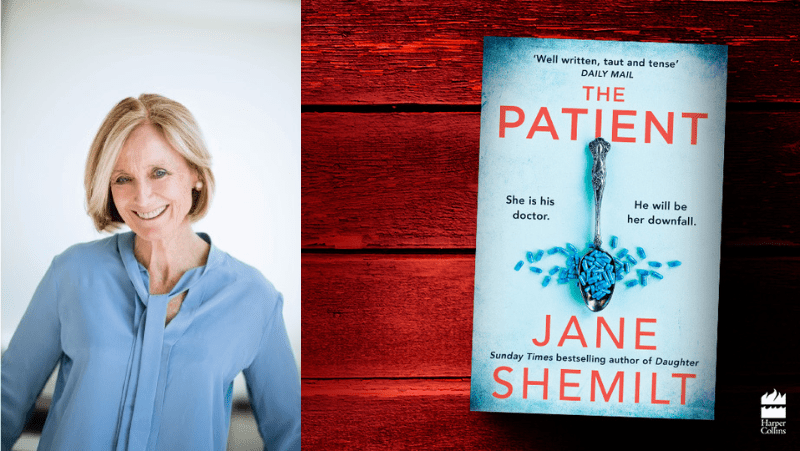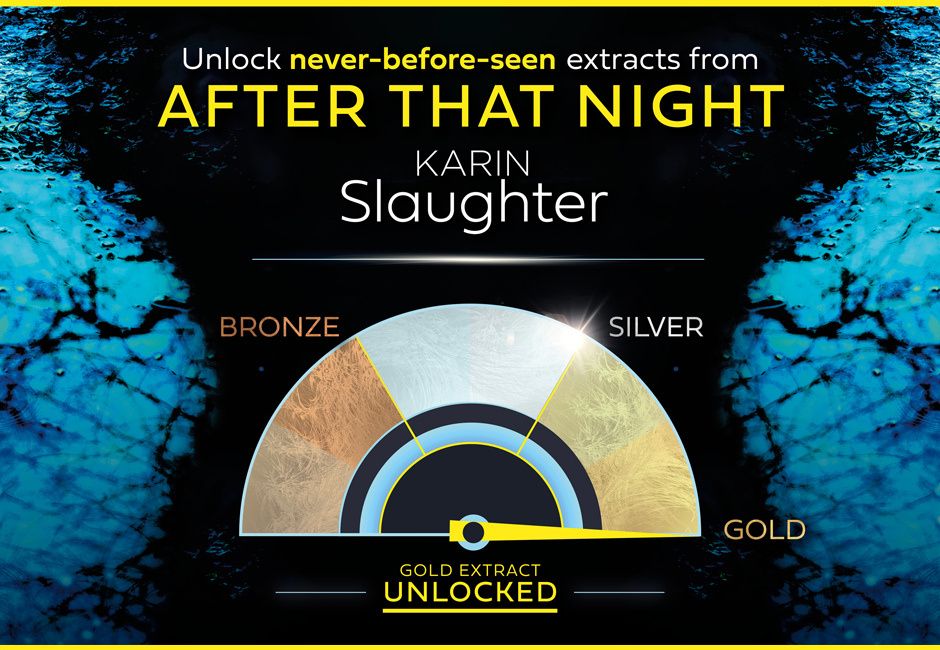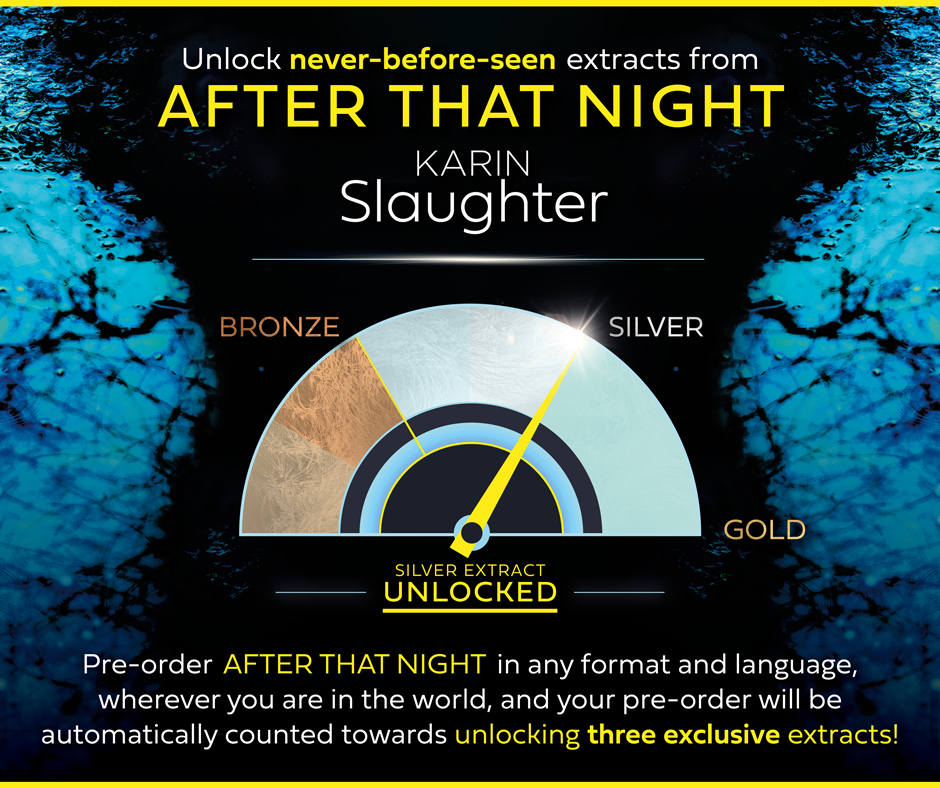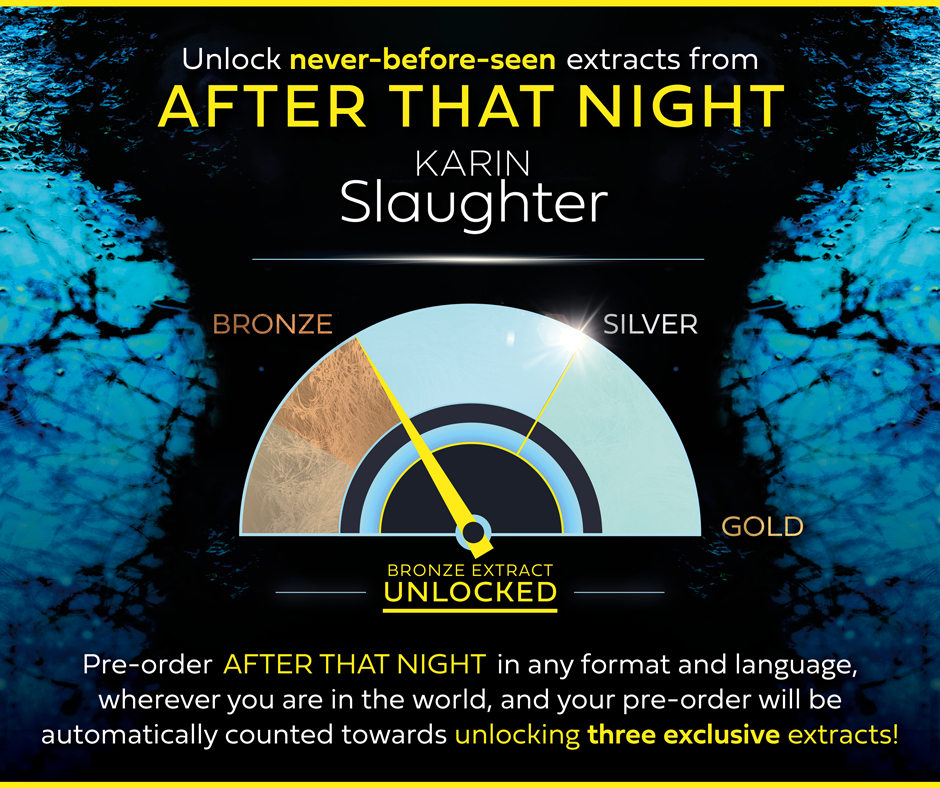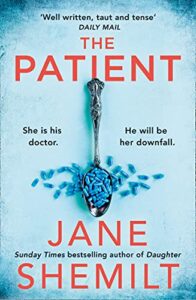
She is his doctor. He will be her downfall.
When Rachel meets Luc, the attraction is instant.
But she is a doctor, and he is her patient.
She gives him the drugs he needs – but in doing so, risks everything.
And when a secret is exposed, they’re both in the firing line.
Not all patients are telling the truth
‘A powerful obsession turns dark in this gripping tale of desire, betrayal and murder’ T.M. LOGAN
‘Beautifully written, The Patient is both a psychological thriller and a redemptive love story with twists galore’ SARAH VAUGHAN
What were your inspirations for writing The Patient?
The Patient grew out of an encounter with a young psychotic patient when I was a medical student. He had come into the Accident and Emergency department and as I waited with him for his assessment by the duty psychiatrist, words poured from him in a glittering stream; he told me he felt like a plane speeding faster and faster down the runway and I knew exactly what he meant because I’d felt exactly the same. I often stayed awake all night to study and had felt the edges of mania then – sleep deprivation is known to do this. We were a world apart, that patient and I; I couldn’t for one moment presume to have gone through what he had, but all the same we shared a baseline. There is no doubt that stigma is attached to serious mental disorders and patients who suffer from them – in fact this stigma is growing. I wanted to write a story which showed that, of course, such individuals are as compelling, attractive and deserving of love as anyone.
I was separately inspired to write The Patient by other women: by talking with friends, listening to conversations on Women’s Hour and reading columns in newspapers – all indicated a ground swell of interest in mid-life changes, doing something that had long been a dream before it was too late. When speaking to groups I am often asked about my own life changes from being GP to a writer; many in the audience come up afterwards to say they would love to do the same sort of thing, they tell me that they have always nourished a secret desire to write, or make pots or grow beautiful flowers – something creative after a lifetime of doing a career that they embarked on because they felt they should. I began to think about writing the story of a woman, Rachel, who found herself at a crossroads despite being settled in her career, her marriage and her community, but who followed her heart into a different life.
And I wanted to write a love story for once – noticing that in books that I read and the films I watched, whether conventional or obscure and cutting edge, it was fundamentally the relationship that sucked me in, the thing I rooted for, that I turned the pages to pursue. Happy ending or sad? Did they get together or not? Who deceived who in the end? Whose heart got broken or mended? The Patient is a story of many layers but at its heart it’s a story about love.
The Patient discusses issues of mental health and loneliness, was this inspired by your work as a GP?
Definitely. Most patients I saw in General Practice had a mental health issue in addition to the problem they had come to see me about; depression is the number one cause of disability world-wide and suicide, the second leading cause of death in 15 to 29 year olds. Mental problems are often hiding just under the surface, but if you ask the question and especially if you listen, it reveals itself. The main problem is time – it’s very difficult in the span of ten minutes to help a patient with depression. I explore the inherent risks of this in one of the story lines in The Patient, the outcome of which is tragic. Luckily a GP has the chance to see patients again and over time and with trust these kind of problems can be shared and sometimes helped.
Loneliness is very present and is often at the heart of patients’ needs when they return with new issues – as soon as one is solved another crops up. Loneliness is a complex issue that has profound implications for mental and physical health, leading to heart disease, dementia and early death. Sometimes focused listening was all it took for the patient to feel better, but the truth is there is no easy cure. Counselling, which can include grief counselling, positive self-talk, hobbies and listening, can help but it’s a social issue too with no easy answers. I don’t offer solutions in The Patient, but sometimes just showing a problem exists can make readers who relate to that feel heard.
What is your writing process like? Do you plan out a story or write as it comes to you?
The answer is both of these things. I like a framework but one that is infinitely adaptable; there to hold the story together while I am building it, like scaffolding, but one that can be extended or unbolted as well.
When I have the initial idea or character, I draw a spider diagram with that idea or character in a bubble in the centre of the page. I draw lines radiating out with ideas as they come – allowing myself to think of anything and everything to do with that idea/character: the central dilemma facing him, his job if he has one, his home, partner, relatives, friends (and enemies). What keeps him awake at night? All those kinds of things.
Then it’s time for the synopsis, writing out the basic story/plot outline, finding as I do that some ideas occur as I write, and others don’t work. This is flexible; when I looked back at my original synopsis for The Patient, it was almost unrecognisable, so many things had changed but having that initial outline was crucial to my process.
I often begin then and write the initial few chapters (no more than five) to feel my way in and then I’ll stop and write and a number of chapter outlines, as by then I have a clearer idea of where I am going and who with. This outline creates a map with a path down which I can walk, with a beginning and an end. But as with any map, there is always the option to take a side road if it looks promising or explore an interesting little track, almost invisible in the grass, knowing the main path is there to come back to. I find as I progress that actually, the ending isn’t where I thought it would be at all but somewhere else altogether and that unexpectedness is for me one of the main joys in writing.
What is your writing routine? Do you set a goal of a number of words a day? Do you prefer to write during the day or at night?
My writing routine varies depending on what stage of the novel I’m at; the initial stages can be the most tricky, creating that lump of clay to be shaped in later edits. This requires a lot of creative energy. I aim to work at least in the mornings; allowing myself the afternoons and evenings to absorb other books, films, conversations and landscapes which will seep into and bolster the creative process. Of course, there needs to be space for all the other stuff: tax returns, sorting papers, birthday presents, taking the dog for walks, seeing friends and cooking – normal things that tend to get pushed aside as the writing hots up.
At this stage it is good to get a thousand words done a day but sometimes I’m lucky to end up with three hundred.
Things shift up a gear chance once I’ve finished the first draft, when I start going through it again; so much happens in the re-writing, which is often when I see themes and connections that haven’t been obvious until then.
As the deadline approaches, I work intensely up to twelve or more hours a day and this is the stage I love – things will be falling into place, at this point I am living and breathing the story.
I try to sleep at least 5 hours a day, once when completing a novel I worked for seventy-two hours non-stop. Ridiculous though that sounds, at the time it felt possible and necessary. I needed to hold the threads of the story very tightly and was afraid if I got up to eat or sleep, I’d drop one of them by mistake. That was an exhilarating time, reminding me of how I used to work when I was a medical student, but my shoulders were stiff afterwards and I thought – never again!
How do you conduct research for your books? What interesting things have you found out along the way?
The research I most enjoy is exploring the settings for my novels. I grew up in Salisbury and always wanted to place a novel there – The Patient gave me that chance. I wanted a small-town community where people knew each other well and where shocking events, such as murder, would send powerful waves of disquiet through the community. The cathedral and the ancient houses surrounding it are among the most beautiful in the world, but at night the gates are closed and you are locked inside a small world where everyone knows everyone else’s business. It is easy to feel trapped and the setting allowed me to explore what such claustrophobia can do. The cathedral, a stunning architectural and engineering achievement, was also a massive cliff of stone that could feel overbearing, almost intrusive; I admit to feeling surprised when I rediscovered the feelings I’d had as a child walking close to the cathedral. I wanted that tension between beauty and fear in the novel itself. The research in this case was simply a deep dive into memory; I couldn’t go back to the Close because of COVID restrictions on travel at the time, but I was surprised to find I could walk around it from memory and observe everything in great detail, including into the houses of friends who lived there which became houses in the book.
I travelled to Provence with my husband to experience the other setting in The Patient. As we walked through the hot landscapes, it wasn’t hard to imagine Rachel and her lover tucked away in an old house near St Remy, a land of olives groves and white mountains just like the ones Van Gogh painted. The scent of lavender. The sound of cicadas and the intense warmth of the sun found their way straight into the book.
I went to Jura, an island in the remote Outer Hebrides in Scotland for one of my previous novels, How Far We Fall to capture the grandeur of the landscape. We walked the length of the island and the house George Orwell rented, which we spotted on the walk, became the childhood home of one of the protagonists. I visited Botswana for The Drowning Lesson, or I’d never have known what the light was like, the smell of the bush and the vastness of the dry, empty-seeming countryside which confronted the parents in that novel whose child has been taken.
The Peloponnese in Greece gave me the holiday house for the family and their friends in Little Friends. And recently I travelled to the beautiful and unspoilt Greek island of Paxos for my latest book, The Therapist – out in 2023 – a dark tale set in a gorgeous place. The beauty of the island is a counterfoil and contrasts to the terrible things that happen in the story.

